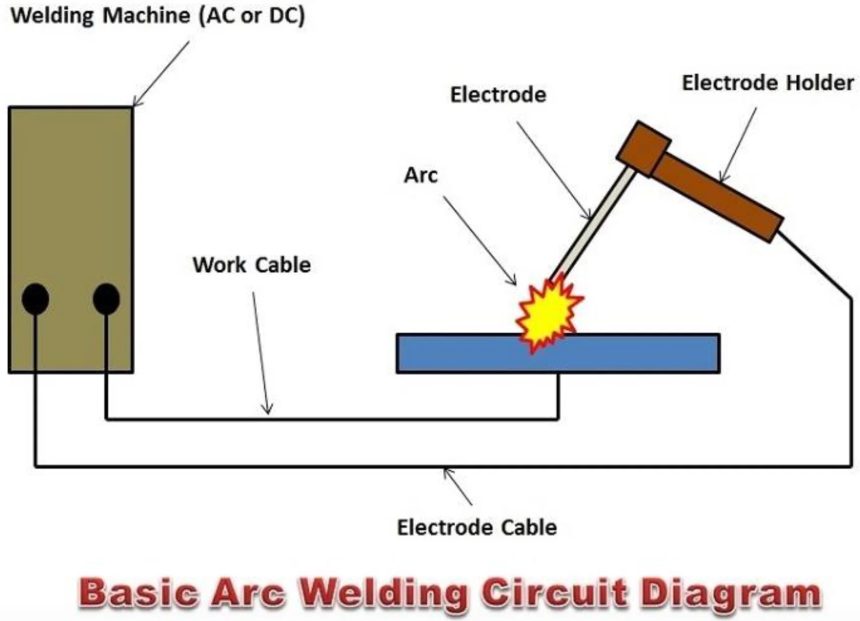electricity to generate high levels of heat, which in turn melts the metals, creating a molten pool. As the metals cool and solidify, they fuse together, forming a single material. This fusion is the key factor behind the strength and durability of welded structures.
Arc welding is the process of melting two metals
Welding Town
TIG welding
TIG welding, also known as gas tungsten arc welding (GTAW), is a welding process that offers several distinguishing characteristics:
- Pointed electrode for precision: TIG welding employs a non-consumable tungsten electrode with a pointed tip. This design allows for precise control and accurate welding in various applications.
- High-quality, attractive welds: When performed correctly, TIG welding produces high-quality welds known for their cleanliness, excellent aesthetics, and strong mechanical properties. It is often favored for applications that require superior weld appearance and integrity.
- Slow process: TIG welding is generally considered a slower welding process compared to others. It requires patience and meticulousness to achieve the desired results.
- Minimal cleanup required: TIG welding produces minimal spatter and slag, resulting in a cleaner weld that requires less post-weld cleanup.
- Filler material optional: While TIG welding can be performed without filler material, it also allows for the addition of filler wire if necessary to reinforce the weld joint or achieve specific properties.
- Best performed indoors: TIG welding is typically carried out indoors or in controlled environments to minimize the effects of wind, drafts, and atmospheric contaminants on the welding process.
- More difficult to learn: TIG welding is considered more challenging to learn compared to other welding techniques due to its precision requirements and the need for manual dexterity and control.
- Good for welding round things: TIG welding excels at welding cylindrical or round objects, such as pipes or tubing, thanks to its ability to produce precise, high-quality welds.
While TIG welding may pose a learning curve, the results it offers in terms of weld quality and appearance make it a highly sought-after welding process for skilled welders.
The TIG welding process
The TIG welding process involves the following steps:
- TIG welding gun: The TIG welding gun consists of a pointed tungsten electrode, a connector for the welding machine, and a shielding gas supply.
- Creating the arc: The TIG welding arc is initiated by touching the pointed tungsten electrode to the base metal and then quickly removing it. This creates a small and intense arc that is well-suited for high-quality and precise welding.
- Filler metal (optional): TIG welding is unique in that it doesn’t necessarily require a filler metal, but one can be used if necessary. If a filler metal is used, it needs to be manually fed by hand during the welding process.
- Tungsten electrode selection: Various types of tungsten electrodes are available to suit different types of welds. Pure tungsten electrodes are commonly used, especially for metals like aluminum.
- Shielding gas selection: The choice of shielding gas in TIG welding depends on the specific metals being welded. Argon is a commonly used shielding gas in TIG welding.
- Indoor welding: Like MIG welding, TIG welding utilizes an external gas supply for shielding, making it best suited for indoor environments away from wind and drafts.
Where is TIG welding used?
TIG welding finds application in various scenarios:
- Thin sheet metals: TIG welding is well-suited for welding thin sheet metals due to its precise control and low heat input, minimizing the risk of warping or distortion.
- Visible projects: TIG welding’s ability to produce high-quality and clean welds makes it ideal for projects where the welds will be visible. It is often used in metal art sculptures and other projects where aesthetics are important.
TIG welding’s capability for precise and clean welds, along with its suitability for thin materials and visible projects, has made it a preferred choice in industries such as art, automotive, aerospace, and more.












